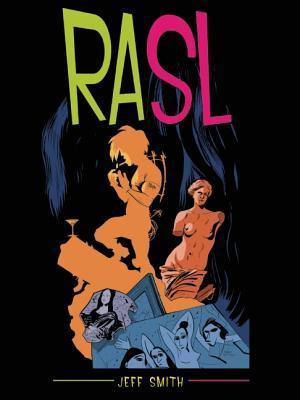What do you think?
Rate this book


468 pages, Hardcover
First published September 17, 2013
 (page 258) Like the aforementioned Christopher Nolan movies, RASL unfolds as a mystery, complete with temporal and spatial flashbacks. Especially spatial: the protagonist is an experimental physicist-turned-art thief who mines and exploits Nicolai Tesla's journals to bounce across parallel worlds and dimensions. That's your premise going in, so if you think that's too ridiculous to swallow, don't buy admission to this ride. Naturally, this being a noir, our hero is ever chased by (and ever chasing) a sociopathic villain offended by the notion that the parallel worlds are real... notwithstanding the fact that he's actively darting in and out of them. The middle panels of p. 227 are as good a synopsis of RASL's worldview and plot as any.
(page 258) Like the aforementioned Christopher Nolan movies, RASL unfolds as a mystery, complete with temporal and spatial flashbacks. Especially spatial: the protagonist is an experimental physicist-turned-art thief who mines and exploits Nicolai Tesla's journals to bounce across parallel worlds and dimensions. That's your premise going in, so if you think that's too ridiculous to swallow, don't buy admission to this ride. Naturally, this being a noir, our hero is ever chased by (and ever chasing) a sociopathic villain offended by the notion that the parallel worlds are real... notwithstanding the fact that he's actively darting in and out of them. The middle panels of p. 227 are as good a synopsis of RASL's worldview and plot as any. Just like in Inception, the protagonist (and we, the audience) require a totem to keep track of all these facsimile realities and time-shifts. So if Earth-null (our homeworld) has Bob Dylan, Earth-prime might harbor only Robert Zimmerman, while Earth-square might show a differently-phased moon. Smith is brilliant at using subtle visual cues (backgrounds, text coloring, facial markings and tattoos, etc.) to signal these changes to the reader. On the whole, even if it's an exploration of a wholly different fantasy genre, RASL ends up being every bit as clever as Bone, and nearly as engaging.
Just like in Inception, the protagonist (and we, the audience) require a totem to keep track of all these facsimile realities and time-shifts. So if Earth-null (our homeworld) has Bob Dylan, Earth-prime might harbor only Robert Zimmerman, while Earth-square might show a differently-phased moon. Smith is brilliant at using subtle visual cues (backgrounds, text coloring, facial markings and tattoos, etc.) to signal these changes to the reader. On the whole, even if it's an exploration of a wholly different fantasy genre, RASL ends up being every bit as clever as Bone, and nearly as engaging.